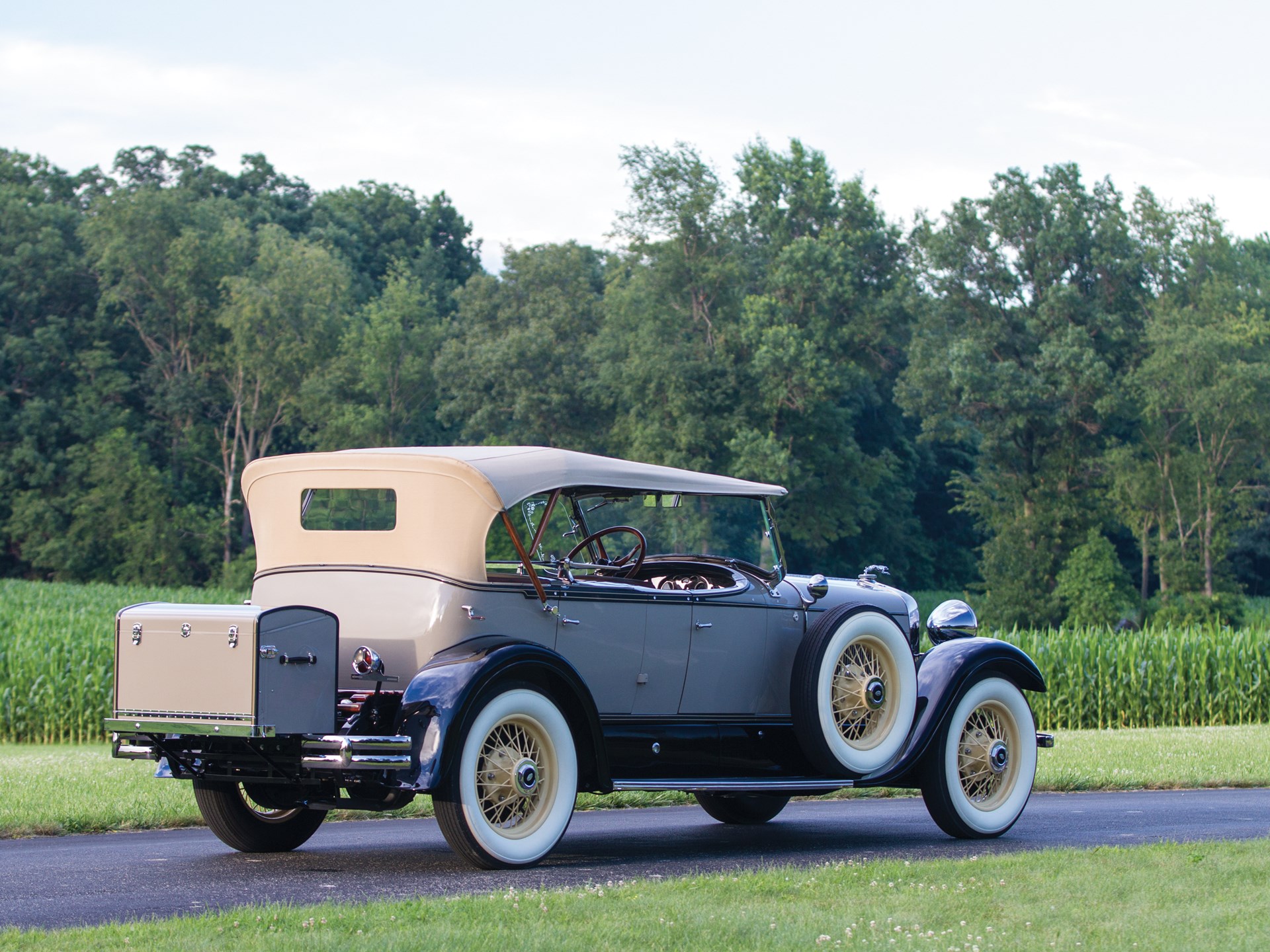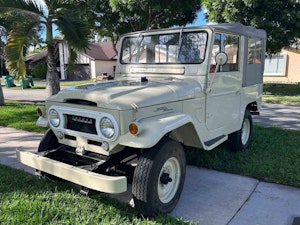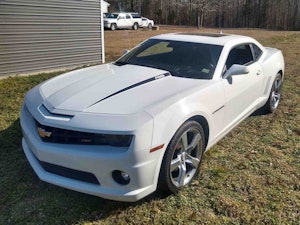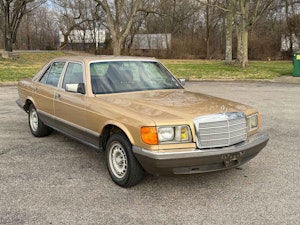Media | Articles
American Frenemies: Cadillac and Lincoln were launched by the same man
Here’s a nugget of Motor City lore known only to devout Cadillac and Lincoln enthusiasts: the same entrepreneur was responsible for creating both of America’s premier brands.
You won’t find the name Henry Martyn Leland etched in stonework atop any Detroit edifice or adorning a life-size statue. Nor are there many books detailing the life and times of this craftsman. That’s a pity because Leland is not only the patron saint of Cadillac and Lincoln, he also played a major role perfecting interchangeable parts, V-8 engines, and the electric starter. In his spare time, he invented the electric hair clipper.
Born in Vermont in 1843, Leland grew up in the Machine Age. He developed his appreciation for organization, neatness, and precision during his apprenticeship and employment at machine tool and firearm manufacturers in Massachusetts and Connecticut. The tool of the day was the vernier caliper, invented in 1851, which facilitated accurate measurements to 0.001-inch.
Leland’s 1890 relocation to Detroit coincided with the first buds of what would become the auto industry’s thriving oak. Lumber baron Robert Faulconer, seeking to grow his wealth, partnered with Leland to open a machine shop aimed at supplying parts to automotive pioneers such as Ransom E. Olds. After three months, the company’s rolls had swollen to 60 employees. Horace Dodge, one of the first workers, graduated from Leland & Falconer to pursue a grander destiny with his brother John. Adding foundry operations to supplement machining in 1896 was the key to winning an order for complete marine engines.
Marketplace
Buy and sell classics with confidence

Ransom Olds tapped L&F to remedy noisy transmission issues in his curved-dash runabouts. Following a fire at the Olds works in Detroit, L&F won a contract to supply 2000 engines, in large part because the Dodge Brothers lacked the capacity to meet Olds’ growing demands.
An inadvertent comparison test at Detroit’s first auto show in 1901 revealed which firm supplied the better Olds engine. A prominent display had two of the single-cylinder engines idling side-by-side. The one built by L&F had friction brake applied to its flywheel because its operation was significantly smoother than the Dodge-built engine placed next to it. While few attendees noticed any difference, Henry Ford was curious enough to inspect the rear of the display whereupon he discovered the friction brake. Without revealing his identity, Ford gleefully encouraged Henry Leland and his son Wilfred, who joined L&F in 1890, to note the power-absorbing brake on one of the engines. Subsequent measurements revealed that the Dodge engine produced 3.0 horsepower while the better made L&F version delivered 3.7 hp.
That incident prompted a full redesign of the Olds engine at L&F, leaving only the bore and stroke unchanged. Breathing improvements yielded 10.25 horsepower from 1.6 liters, nearly three times the output of the engine in service. In lieu of a throttle, the new Little Hercules engine used variable intake valve lift—decades ahead of Honda’s VTEC and BMW’s Valvetronic—to control power and rpm. Unfortunately, retooling costs blocked it from production.

Leland’s engine soon came in handy when Henry Ford’s second attempt at the car business was on the ropes. His first enterprise, the Detroit Automobile Company, lasted only 16 months. The Henry Ford Company, founded in 1901 with Ford as chief engineer, scored significant racing successes but faced liquidation when Ford left the following year. Leland was commissioned to appraise the value of the company’s equipment and report to the board of directors.
With his appraisal documents, Leland brought his Little Hercules engine to the directors’ meeting, exclaiming that going out of business was the wrong move. “The engine we worked out at L&F has three times the power of an Olds engine. Its parts are interchangeable, it is not temperamental, and I can make it for less than the cost of an Olds engine.”
Moving swiftly, the directors boosted capitalization to $300,000, put Leland in charge of manufacturing driveline and steering equipment, and on on August 27, 1902 christened the revived venture the Cadillac Automobile Company—after the French explorer Antoine de la Mothe Cadillac, who founded Detroit.



A prototype rolled forth three weeks later, followed by two Cadillacs for display at January’s New York auto show. Upon receipt of 2286 $10 deposits for the car, Cadillac’s ebullient sales manager declared a sell-out. Production began in March 1903, yielding 1895 cars in the first full year, a volume second only to the Olds Motor Works. By 1905, Cadillac was the world’s largest car maker in no small part due to the company’s merger with Leland & Falconer. Leland was appointed general manager and his 35-year old son, Wilfred, served as assistant treasurer.
In 1908, Cadillac enjoyed an opportunity to show off its precisely made interchangeable parts at a Royal Automobile Club (RAC) competition in England. After lapping the Brooklands race track at speed, three Cadillac Model M cars were totally disassembled. Some 2000 component parts were scrambled and 90 spares from inventory were added to the mix. Upon reassembly, two cars started on the first throw of their cranks with the third requiring two swings. They all ran flawlessly for 500 miles around the track averaging 34 mph and 30 mpg.
The RAC presented Cadillac with its Dewar Trophy for the year’s greatest advancement; shortly thereafter, “Standard of the World” became the brand’s advertising slogan.
Moving to a four-cylinder engines in 1908 tripled Cadillac’s sales and caught the eye of GM founder William Durant. The following year GM acquired Cadillac for $4.5-million just as gas stations, concrete pavement, and cross-country driving began revolutionizing society.
As GM’s luxury brand, Cadillac benefitted from one advancement after the other: closed bodywork, a more reliable Delco coil and breaker point ignition system, and self-starting. The RAC gave Cadillac its second Dewar trophy after a 1912 model demonstrated 1000 successive engine starts and stops. In 1915, Cadillac introduced the world’s first mass-produced V-8, which produced 70 horsepower from 5.1 liters and was equipped with a thermostatically-controlled cooling system.
The U.S. war department purchased over 2000 Cadillac V-8 cars for shipment to Europe during World War I and Cannonball Baker used them to set cross-country speed records.
America had mixed emotions about the war in Europe. President Woodrow Wilson hoped to broker peace without losing American lives, at least until a German U-boat sank the Lusitania, killing 1198 passengers, 128 of them Americans. The U.S. finally declared war against the Central Powers in 1917, whereupon the French requested support in the form of 4500 airplanes and 5000 pilots.

The best America could do was supply engines using auto industry design and manufacturing expertise. After hasty consultations with British and French military experts, a group of designers were cloistered in a Washington, D.C., hotel to work around the clock. Led by Packard’s Jesse Vincent and Hall-Scott Motor Car Company’s Elbert Hall, this 200-person team designed what became the Liberty V-12 in a remarkable five days. Less than three months later, this engine completed its 50-hour durability test.
The patriotic Lelands hoped to hope to convert Cadillac’s new assembly plant to aircraft-engine production, but GM chairman Durant would hear nothing of the kind. Without hesitating, the Lelands resigned from GM to offer their manufacturing expertise to the war effort.
Well in advance of any government contract, the Lelands leased property in Detroit and spent their own funds to prepare for aircraft engine manufacturing. Four days after the Liberty completed its shakedown test, the Lincoln Motor Company—a name chosen in part because Henry Leland’s first-ever vote was for Abraham Lincoln—was incorporated with an initial capital of $1.5 million. Most of the backing came from investors who believed in the Lelands’ cause. Shortly thereafter, Lincoln won a government contract to build 6000 engines.
The first Lincoln-built Liberty was finished in February 1918 and shortly thereafter production commenced at a second plant. In the month of October, Lincoln delivered 1111 engines, a volume topped only by Ford. Even though the armistice signed November 11, 1918, ended the war, production continued for a couple more months.
Seemingly untroubled by substantial debt and 5600 employees on their payroll, the Lelands prepared for their next manufacturing enterprise. After briefly pondering supplying engines to others, they aimed higher to produce “the finest motor car ever built.”



That goal turned out to be the Lelands’ most ambitious—and ultimately unrealistic—undertaking. The Lincoln Model L, which rolled forth late in 1920 with V-8 power was well made but suffered from dated design. Hoping for 6000 deliveries that year, only 700 cars were sold. The slow post-war economy didn’t help.
When the federal government demanded millions in back taxes owed on its new factory and tooling, and when no additional investors could be found, Lincoln’s board of directors reluctantly sent its young enterprise to receivership on November 8, 1921.
Henry Ford, by now one of the world’s richest men, was a prime candidate for assistance. While he refused to loan Lincoln any money, he expressed willingness to help avoid parting out the company once it reached receivership.
Truth be known, Ford had no interest in building Lincolns or any other luxury car, but he knew a bargain when he saw one. The $12 million he ultimately paid for Lincoln, and what was owed to suppliers was $2 million less than the Lelands had invested—and barely a quarter of the company’s actual worth. While the press portrayed Ford as Lincoln’s rescuing angel, the truth was less benign. Original stockholders and suppliers never received the money they deserved. Nor did the Lelands. A verbal commitment for the Lelands to remain in charge of manufacturing operations was soon ignored as well.



One of the first changes to the Lincoln assembly plant was the demolition of Henry Leland’s private office. When the melding of Ford and Lincoln practices proved impossible, Wilfred Leland pleaded with Henry Ford to sell the company back to its original management for the price paid plus interest. Ford responded by sending two operatives to fire the Lelands. They were given two weeks’ severance pay, and Lincoln’s 79-year-old patriarch was allegedly carried out of the building and onto the street still seated in his armchair.
Lincoln’s savior turned out to be Henry’s son, Edsel, whose eye for fine design and patrician tastes were exactly what Lincoln needed to thrive. The introduction of contemporary coachbuilt bodywork was first on Edsel’s agenda, a move that made the brand profitable by 1923. His 1936 V-12 Zephyr broke the big-boxy mold, lifting Lincoln sales ninefold. The 1939 Continental he commissioned for personal use entered limited production by popular demand and is now considered one of the world’s all-time classics.
So, you can thank both Edsel Ford and the Lelands that America still has two premium brands defending its honor on the global luxury stage.










